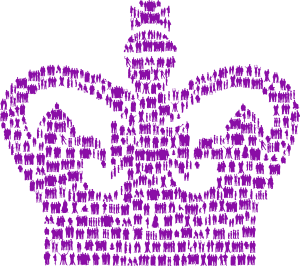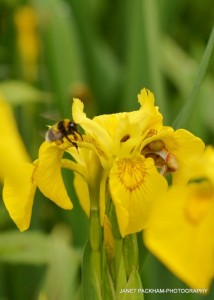The fine sunny days this month have seen the insects and bees busily visiting flowers collecting pollen and nectar. On a warm evening as dusk approaches have a look at the perfumed honeysuckle. You may spot a moth or two.
Bumble Bees
Bees are not as common as they once where in our gardens and countryside. Fortunately, places such as our nature reserve provide food and a safe habitat for them. It may be just an old wives tale but the word ‘bumble’ is thought to describe their erratic flight as they stagger from flower to flower with their ‘shopping’ baskets full of pollen. Take a little time to watch them, as they sometimes struggle to take flight.
Bees are superbly adapted for collecting pollen. One pair of legs have baskets in which to put the pollen, a second has a comb with which to brush the pollen off their bodies and transfer it to the basket. On the third pair of legs is a hook, presumably used to scrape the pollen out of the basket when they arrive home! There are several species of bumble bee, some social and others solitary. Visit the website of the Bumble Bee Conservation Trust for more information and downloadable identification charts:
Bumblebee Conservation Trust
June Bug
And talking of bumbling, You may have had one of these bump into you as you walk or cycle along on a warm evening! Its flight is very erratic and it often flys into doors and windows!
Also known as a May bug the Common cockchafer (Melolontha melolontha) emerges in early May having spent up to three years underground as larva and pupa. This shiny brown beetle is about 4 cm long and easily recognised by its long feathery antennae.
Last week I observed a robin trying without success to get one into its beak. It did of course give up and go off in search of a meal of more manageable size!
Tony Finn


